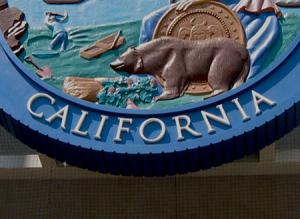California Establishes $1 Billion Initiative Aimed at Lower-Income Sector

Consistent with the goals set forth in 2015’s Assembly Bill (AB) 693, the California Public Utilities Commission has set forth a framework for assuring that a greater proportion of the benefits associated with net metering can be captured by residents in limited-income housing complexes.
More specifically, the commission adopted a new Solar on Multifamily Affordable Housing (SOMAH) program, which the commission said was designed to incentivize the installation of solar distributed generation projects at existing multifamily affordable housing sites. The commission acknowledged that the SOMAH offering is similar to the Multifamily Affordable Housing Solar Roofs Program that was initially created pursuant to AB 693, but it noted a couple of key distinctions, including administration of the SOMAH plan by an independent third party and funding for SOMAH via the proceeds from annual greenhouse gas (GHG) emission allowances.
As envisioned by the commission, the SOMAH program will enable tenants in qualifying low-income housing developments to share in the net metering bill credits accompanying the installation of solar systems. To that end, the commission ruled that 51% of the net metering credits associated with a SOMAH building’s solar system should be allocated to the residents of the building, while the remaining 49% should be assigned to common areas. From the commission’s perspective, such a distribution is consistent with AB 693’s requirement that the solar credits be used “primarily” for the benefit of tenants. The commission said it recognized that some consumer advocacy groups had lobbied for a greater share of the net metering credits to go to residents. However, the commission stated, it was persuaded that a 51/49 apportionment would encourage greater participation by building owners. The commission asserted that the net metering schedule it had devised for the SOMAH program would offer significant economic incentives to owners of buildings that meet the criteria for designation as affordable housing.
The commission reported that such incentives will take the form of a base rate of $3.20 per watt for the portion of the solar facilities serving tenants and of $1.10 per watt for solar service to common areas. The commission outlined several requirements that building owners must meet in order to participate in the SOMAH plan. Such criteria include the following:
- A property must have a minimum of five residential rental units;
- The building must be subject to a deed restriction or some other financial agreement that identifies the premises as affordable housing;
- There must be at least 10 years remaining on that affordable housing designation;
- Rent must be maintained within “reasonable” limits, as determined by a local agency overseeing housing programs;
- Units must be separately metered and eligible for a utility’s virtual net energy metering (VNEM) tariff;
- The property must be an existing building, as new construction is not eligible;
- At least 80% of building residents must have incomes at or below 60% of the area median income; and
- Properties with community choice aggregation (CCA) residents may enroll in the SOMAH plan provided the sponsoring CCA program has a VNEM construct.
Observing that the overall goal of AB 693 had been to have at least 300 megawatts (MW) of solar capacity installed at multifamily affordable housing developments by 2030, the commission provided for the SOMAH initiative to be funded at a rate of $100 million a year for a 10-year period, for total funding of $1 billion. The commission commented that a substantial level of investment was clearly needed in that under the first affordable housing solar roofs program, only 39 MW had been added.
Moreover, in contrast to the earlier version of the SOMAH plan, which depended on funding from the state’s largest electric utilities, the updated program will be subsidized through California’s cap-and-trade program, under which GHG emissions allocated to the utilities are sold in a quarterly auction process. The commission conceded that should the GHG auctions fail to attain the $100 million funding threshold, the SOMAH plan may not be as effective as anticipated. However, the commission cited recent auction results as indicating that it was unlikely that GHG sales will fall short of the goal. Highlighting another difference between the original multifamily affordable housing solar project and the SOMAH program, the commission pointed out that the new plan would be managed by a statewide third-party administrator, to be selected through a competitive process in response to a request for proposals. The commission asserted that such independence would better assure that the bill credits afforded by the installation of solar facilities would be passed through to the tenants of the qualifying housing developments.
The commission expressed confidence that the SOMAH program as now presented will extend to lowerincome consumers the same benefits of solar energy and associated net metering bill credits that customers of means have long been able to take advantage of. Even so, though, the commission admitted that the twoyear lapse between enactment of AB 693 and implementation of the new SOMAH program may seem unreasonable to some. The commission averred that although it may have taken longer, it was preferable to adhere to a deliberative process that took into account all stakeholder positions and allowed for careful analysis of all data available before instituting the revised SOMAH initiative. Re Successor to Existing Net Energy Metering Tariffs, Decision 17-12-022, Rulemaking 14- 07-002, Dec. 14, 2017 (Cal.P.U.C.).



